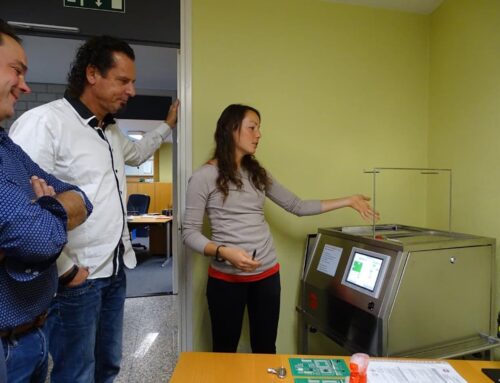It seems like yesterday when we first heard about 1G technology. And this was at the end of the 80s. As from 2010 we have had G4 technology, and now we are in the middle of 5G being rolled out all over the world, while there are already places where the first steps towards 6G are taken.
In this article we will discuss the impact of 5G and give a sneak preview of 6G.
At the end of the new decade the 5G market will be worth more than €10bn, and it will continue to grow because of its endless possibilities and applications. If we compare 5G speed with the speeds of 3G and 4G, we can see huge differences. Downloading a two-hour film with 3G would take 26 hours, with 4G it would take 6 minutes, and with 5G less than 4 seconds. The introduction of 5G requires enormous investments. By the end of next year the 5G introduction alone will have cost over €2bn, half of which is needed to improve the network.
The car industry has already embraced 5G. In early 2019 SEAT unveiled its Minimo, the first 5G car in Europe. It may have been a concept car, but SEAT clearly showcased the huge possibilities. The one thing that the car industry has to do is win the customers’ trust, and this will only be possible once customers become convinced that autonomous cars are safe.
5G can also lead to great advances in the medical sector. Crystal clear video streaming in 5G allow a doctor to easily and directly contact patients and colleagues without having to travel. Ambulances can reach accident locations much faster thanks to 5G connectivity, and with 5G built into sensors preventive action can be taken to support patients who are at risk.
Developments in 5G also affect AR and VR products. Holographic images will be used more and more often, because 5G can bring them to life. This can be done in computer games, but also in organisations.
Safety in society will also be impacted. 5G will make the Internet of Things much more powerful, linking smart cameras to detection equipment, street lanterns, monitoring systems, etc., making crime fighting easier.
On the other hand, 5G also has a dark side. The ever expanding need for antennas could endanger public health with their radiation, though scientists disagree about the effects and further research is necessary. Another issue is cyber security. People can be tracked and traced and telephone calls (mostly live video talks) can easily be wire tapped, so people are not sure that 5G devices sufficiently protect their privacy. Would for instance the Chinese government have installed a backdoor into Huawei phones to spy on users?
Before 5G has even been rolled properly, various market parties are already developing 6G. In Finland research is being done into software, materials and antennas that can be used for 6G. But let’s not look beyond tomorrow. Let’s focus on the coming years in which 5G will pervade our lives and present enough challenges. As soon as there is breaking news on 6G, we will report on it.










